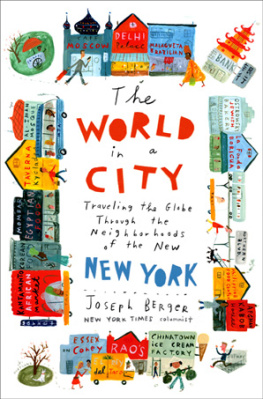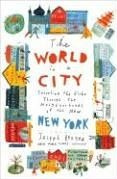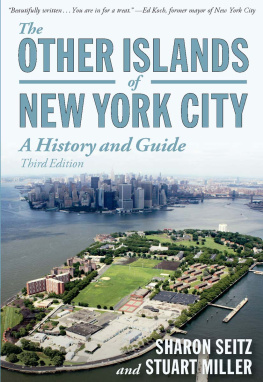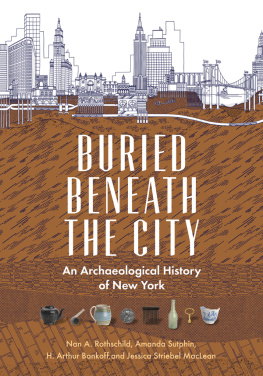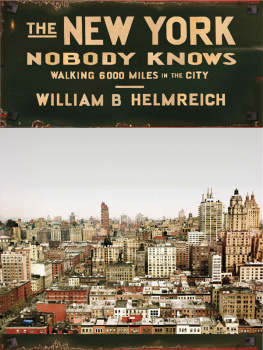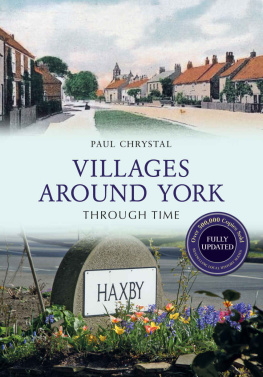Joseph Berger - The World in a City
Here you can read online Joseph Berger - The World in a City full text of the book (entire story) in english for free. Download pdf and epub, get meaning, cover and reviews about this ebook. publisher: Random House Publishing Group, genre: Politics. Description of the work, (preface) as well as reviews are available. Best literature library LitArk.com created for fans of good reading and offers a wide selection of genres:
Romance novel
Science fiction
Adventure
Detective
Science
History
Home and family
Prose
Art
Politics
Computer
Non-fiction
Religion
Business
Children
Humor
Choose a favorite category and find really read worthwhile books. Enjoy immersion in the world of imagination, feel the emotions of the characters or learn something new for yourself, make an fascinating discovery.
- Book:The World in a City
- Author:
- Publisher:Random House Publishing Group
- Genre:
- Rating:3 / 5
- Favourites:Add to favourites
- Your mark:
- 60
- 1
- 2
- 3
- 4
- 5
The World in a City: summary, description and annotation
We offer to read an annotation, description, summary or preface (depends on what the author of the book "The World in a City" wrote himself). If you haven't found the necessary information about the book — write in the comments, we will try to find it.
The whole world can be found in this city. . . .
--from the Preface
Fifty years ago, New York City had only a handful of ethnic groups. Today, the whole world can be found within the citys five boroughs--and celebrated New York Times reporter Joseph Berger sets out to discover it, bringing alive the sights, smells, tastes, and people of the globe while taking readers on an intimate tour of the worlds most cosmopolitan city.
For urban enthusiasts and armchair explorers alike, The World in a City is a look at todays polyglot and polychrome, cosmopolitan and culturally rich New York and the lessons it holds for the rest of the United States as immigration changes the face of the nation. With three out of five of the citys residents either foreign-born or second-generation Americans, New York has become more than ever a collection of villages--virtually self-reliant hamlets, each exquisitely textured by its particular ethnicities, history, and politics. For...
The World in a City — read online for free the complete book (whole text) full work
Below is the text of the book, divided by pages. System saving the place of the last page read, allows you to conveniently read the book "The World in a City" online for free, without having to search again every time where you left off. Put a bookmark, and you can go to the page where you finished reading at any time.
Font size:
Interval:
Bookmark:

To Brenda and Annie, my traveling companions for life
The Global City W HEN I WAS EIGHT YEARS OLD AND HAD BEEN AN IMMIGRANT IN New York City just three years, still something of a stranger to its wondrous streets, I came across a cut-rate guidebook to Manhattan. Leafing through it left me with an itch to explore the sights of midtown and downtown, one of those impulses that eight-year-olds find impossible to resist. I felt as possessed as Magellan must have been when he set out to circumnavigate the globe. Soon I enlisted my six-year-old brother, Josh, and my nine-year-old friend Maury from across the street to take the journey with me. On a sunny fall day we actually walked all the way from my home at 102nd Street down to Chinatown and back up to the United Nations, a trek of probably ten miles or so. It was our most adventurous adventure up to that early point in our lives and not so unimaginable for children our age in the snug New York of the early 1950s, the world depicted so evocatively a few years before in E. B. White's Here Is New York. As we hiked along, we took in the Museum of Natural History with its glassed-in grizzly bears, wax Indians, and colossal dangling whale. We gazed at the plump, smug Oldsmobiles and Pontiacs in the row of car dealerships along Broadway, the Camels smoker in Times Square blowing perfectly round smoke rings, the elevated and escalated bazaars of Macy's and Gimbels, and the unrivaled tallest building in the universe, the Empire State. We sailed on to the dazzling model train panoramas of the A. C. Gilbert toy-train building, the stalls of bric-abrac and tchotchkes along Canal Street, the swarming warrens of Chinatown, and, after we turned around and walked north through the uncharted territory of the East Side, the brand-new sparkling glass slab of the UN. There was such a feast of streetscapesgritty to honky-tonk to majesticand a variety of Homo sapiens Irish bus drivers, Italian bricklayers, Jewish garment workers, Puerto Rican doormen, WASP bankers, black elevator operators (migrants no doubt from the dying cotton fields of the South), and secretaries and actors escaping the Midwestthat it seemed we took our time savoring every block. We were so engrossed that by the time we came home my mother had asked the police to search for us. That explorer's wanderlust has never left me, and I've been lucky enough to use it to my advantage in my career as a reporter in New York City, most especially in recent years as a kind of roving correspondent for The New York Times in the city's neighborhoods. What has changed stunningly and magnificentlyis the city itself. The New York of the late 1940s and 1950s, the decorous, congenial metropolis of E. B. White where a mother would allow an eight-year-old to wander miles away, is an artifact for the museums. So is a New York where most of the faces we saw were slightly different shades of European beige dappled by only a few spots of ebony and bronze. Even the New York of the 1970s and 1980s, where grown-ups would stay clear of large parts of the city for fear of attack or humiliation, and where suspicion and fear among races isolated from one another was the background music of the day, that too is gone. The city today is polyglot and polychrome, more cosmopolitan than the Casablanca and Shanghai of the movies, without the hovering air of noirish menace. The whole world can be found in this city. I can do interviews in such exotic places as Ecuador and Uzbekistan and Bangladesh simply by getting on the subway for the cost of a MetroCard. When I took that walk around Manhattan, there were half a dozen sizable ethnic groups, with the rest of the world barely represented except in tourist oddities such as Chinatown and Astoria. But the descendants of those 1950s groups are by now largely settled in genteel suburbs and have been replaced by people born abroad in dozens of countries. Sixty percent of the city's residents are either immigrants or children of immigrants. There are now at least twenty-five new nationalities with significant representationsDominicans, Chinese, Jamaicans, Guyanese, Mexicans, Ecuadorians, Haitians, Trinidadians, Colombians, Russians, Uzbeks, Koreans, Indians, Poles, Filipinos, Bangladeshis, Pakistanis, Salvadorans, Nigerians, and Ghanaians, to name the largest. Most of the new immigrants entered the United States as a result of the Hart-Celler Act of 1965, which ended forty-year-old preferences for immigrants from countries such as Britain, France, and Germany that had historically shaped the American population and established quotas of 20,000 for each country in the Eastern Hemisphere. A 2005 analysis by the New York City Department of City Planning shows that New York stands atop the globe in its ethnic variety. Los Angeles has more people born abroad40.9 percent compared with 35.9 for New Yorkbut most are from Mexico. A handful of world cities rival New York in its proportion of the foreign-bornToronto's is 49.4 percent; Sydney, 33.4 percent; London, 27.4 percentbut their ethnic stew is not as varied. As a result of New York City's newcomers, almost every neighborhood has been transformed from what it looked like at mid-twentieth century. In the 1950s, the city was a checkerboard of provinces clearly carved out by a half dozen ethnic groups, so that the Grand Concourse, Forest Hills, and Midwood were Jewish, the Bronx north of Fordham Road Irish, Bensonhurst Italian in the north and Jewish in the south, and the like. Today Flushing is Chinese and Korean, Jackson Heights is Indian, Ecuadorian, and Colombian, Washington Heights and the West Bronx are Dominican, Richmond Hill is Guyanese, East Flatbush is Caribbean, and Rego Park is Russian and Uzbek. Astoria is still Greek, but far less so and increasingly Arabic, Brazilian, and Bangladeshi. Bensonhurst is still Italian but now a third Chinese. There are also far more melting-pot neighborhoods, such as Ditmas Park, Brooklyn, where no ethnic or racial group is dominant and where a substantial amount of intermingling takes place. Such places exemplify the utopian vision the city had of itself a century ago but that was then actually something of a myth. Many neighborhoods are also very different places than they were as a result of the seismic shifts in the American economy, from greasy nuts-and-bolts factories to cleaner service- and computer-based workplaces. Factory buildings in Queens and the Bronx are now more likely to produce films than white bread, graphic designs for pots and pans rather than pots and pans themselves. The Garment Center now designs and markets dresses rather than actually sews them. The Lower East Side is now less a stop for immigrants from Bohemia than for bohemians. And such innovations as satellite television and videoconferencing are narrowing the anguishing distance the immigrants of Jackson Heights and Flushing feel from their homelands and the families they left behind, changing the very experience of what it means to be an immigrant. New York, colossal as it is, has become more than ever a collection of villages, scores of virtually self-reliant hamlets, each exquisitely textured by a particular ethnicity, history, politics, even housing stock. In the pages that follow, I'll take you to some of those villages, for me the city's most beguiling neighborhoods, and chat with some of their most emblematic and charming inhabitants. We'll meet Claudio Caponigro, the last Italian barber of East Harlem, and I'll tell you about the old, flavorful world of politicians and padrones of which he is a relic and of the changes taking place in the Latino world around him. We will visit the cobbler of Bayard Street in Chinatown, who has set up a shoemaking shop right on a rent-free sidewalk of New York. Wielding his timeworn tools in the frost of winter and the steambath of summer, he is recreating a kind of commerce common in his homeland but that here is a novel twist on the wily immigrant freelancer who scrapes out a living catch-as-catch-can. In a more significant example of immigration's impact on the city's economy, I'll show you how Filipinos in humdrum corners of the city such as the Bronx's Norwood have come to dominate the nursing industry. I'll take you along to another once nameless corner of the Bronx, Bedford Park, to meet Intesar Museitef, a Palestinian woman who for many years traveled four hours a day by subway and bus for a part-time job that paid $7 an hour. She'll give you an idea of the hard lives of some of the newcomers that people neighborhoods like hers. I'll take you to Little Neck, Queens, where the waves of ethnicities slapping up against each other produce tension over something as banal as the signs on shops; to the Grand Concourse, where new waves of African Americans, Ghanaians actually, are saving up their hard-won earnings to buy houses, not in the Bronx, but back home in Ghana; to Brighton Beach and Midwood, where Russian women keep the past alive by draping themselves in fur for the winter and dragging their children to ballroom-dancing lessons; to Rego Park, Queens, where another breed of Soviet Jews, from Uzbekistan and other southern lands, are grappling with a homeland throwback that is not so welcome here wife beating; and to Richmond Hill, Queens, where Guyanese of indisputable Indian descent are spurned by Indians from India. I'll show you neighborhoods filled with piquant streets and cheeky characters that are being transformed as I write, neighborhoods such as Bensonhurst, which is no longer as Italian as it was when Tony Manero swaggered about, strutting his third-generation version of Italian American life in Saturday Night Fever. These older migrations are, in predictable fashion, trading factories and diners for college classrooms and corner offices, forsaking their brick row houses and concrete backyards for suburban greenery. Yet I'll also show you two neighborhoods that have barely changed at all, seaside colonies known as Gerritsen Beach and Broad Channel, where the populations of white ethnic firefighters, garbage collectors, and subway conductors are as timeless as the seagulls wheeling across somber marine skies. Along the way, to give readers some perspective, I will confide at points what I remember of those neighborhoods from my childhood as an immigrant newly plunked down in a dazzling, daunting city and my years as a young striver trying to earn his footing in its rugged urban terrain. As you'll see, Claudio, the Italian barber of East Harlem, stirs me because he reminds me of Boris, the last Jewish barber in the pocket of the Grand Concourse where we lived during my teenage years. The chill between Guyanese immigrants of Indian ethnicity and those who come directly from India recalls for me how the children of the Eastern European immigrants of the late nineteenth century seemed to keep apart from the Holocaust survivors who came over in the late 1940s and early 1950s. In New York, the exuberance of immigrant ascent and the heartbreak of exclusion seem to flow in tandem. I also want to let you know something about the history, landscape, and politics of these neighborhoods, their sights and smells and flavors, some of the spots where I might have enjoyed an unaccustomed meal or a serendipitous purchase. Those who live in the city but rarely venture out of their snug corner of New York would enjoy safaris to these vivid, sometimes astonishing neighborhoods that they may pass under by subway in blissful disregard. But so would strangers to the big city who deprive themselves of a fuller sense of its personality by confining themselves to meeting other tourists at old standbys such as the Empire State Building and the Statue of Liberty. Everyone should know about this rapidly transmogrifying New York because it's coming soon to a theater near you. Though New York is far out ahead of other metropolises in its colorful palette, Chicago, Philadelphia, Los Angeles, and practically every other American citysmall as well as largeand many other world cities have been deeply tinged by waves of immigration. The U.S. Census Bureau released data in 2005 that showed that immigrant populations are growing rapidly in American heartland states such as Indiana, South Dakota, and Colorado. In Deep South Georgia, the foreign-born made up 9 percent of the state's residents. Overall, the 35.7 million immigrants made up 12.4 percent of the nation's population in 2005, a jump of 1.2 percentage points in just five years. While usually one or two ethnic influxes are responsible for change Los Angeles' diversity is mostly Mexican and Chineseonce uniform cities such as Toronto and London are now certifiably polyglot, and other homogenous cities such as Paris and Rome are becoming polyglot. The riots by Arab and North African youths discontented with their treatment by the French, and the bombings of the London subway by Muslim fanatics were stark declarations of these changes. New York is the future they all will share. With a tolerance bred in the bone and a long experience in grappling with immigrants, it has become the world's global laboratory, as Oz Almog, a sociologist in Israel who studies that country's ethnic groups, put it. It is the place where the mixing of contrasting tribes is being tested like nowhere else. A vivid example of the universality of the country's ethnic metamorphosis occurred to me in the summer of 2005 when I took a long weekend trip to Block Island, purportedly a bastion of flinty Yankee ways though heavily touristed in summer, with my wife and daughter and some friends. One afternoon we stopped to have lunch at an Italian bakery called Aldo's. Outside there was a two-man Peruvian band. Each player was wearing a rainbow-colored poncho and playing Inca folk standards, but the songs were interspersed with cosmopolitan kitsch including Shalom Chaverim, a traditional Israeli melody. Here were Peruvians playing Israeli music at an Italian restaurant in a stronghold of Yankee traditionalism. What more need be said about the new America? And it's not just ethnicity, but changing tastes and intellectual perspectives that are altering the landscapeof New York and the rest of the world. Take the Lower East Sidethat fabled immigrant neighborhood that gave birth to so many of the great comedians, songwriters, labor leaders, and intellectuals of the past century. The people who fled the Lower East Side as a festering warren of disease and poverty are witnessing their grandchildren and great-grandchildren moving back to the old neighborhood. Those gritty, jagged streets have become a magnet for another generation of strivers, this one speaking English without an accent. Young people who grew up seeing sunsets over mountains prefer to see them over water tanks, tar-covered rooftops, and cross-hatched steel bridges. The proof is in the soaring rents that those forefathers and foremothers could never have imagined paying. Go figure. Change is bewitching and bewildering, but we must snatch what we see before it flickers into something far different or fades into memory. This book is an effort to seize the New York moment.Next pageFont size:
Interval:
Bookmark:
Similar books «The World in a City»
Look at similar books to The World in a City. We have selected literature similar in name and meaning in the hope of providing readers with more options to find new, interesting, not yet read works.
Discussion, reviews of the book The World in a City and just readers' own opinions. Leave your comments, write what you think about the work, its meaning or the main characters. Specify what exactly you liked and what you didn't like, and why you think so.

